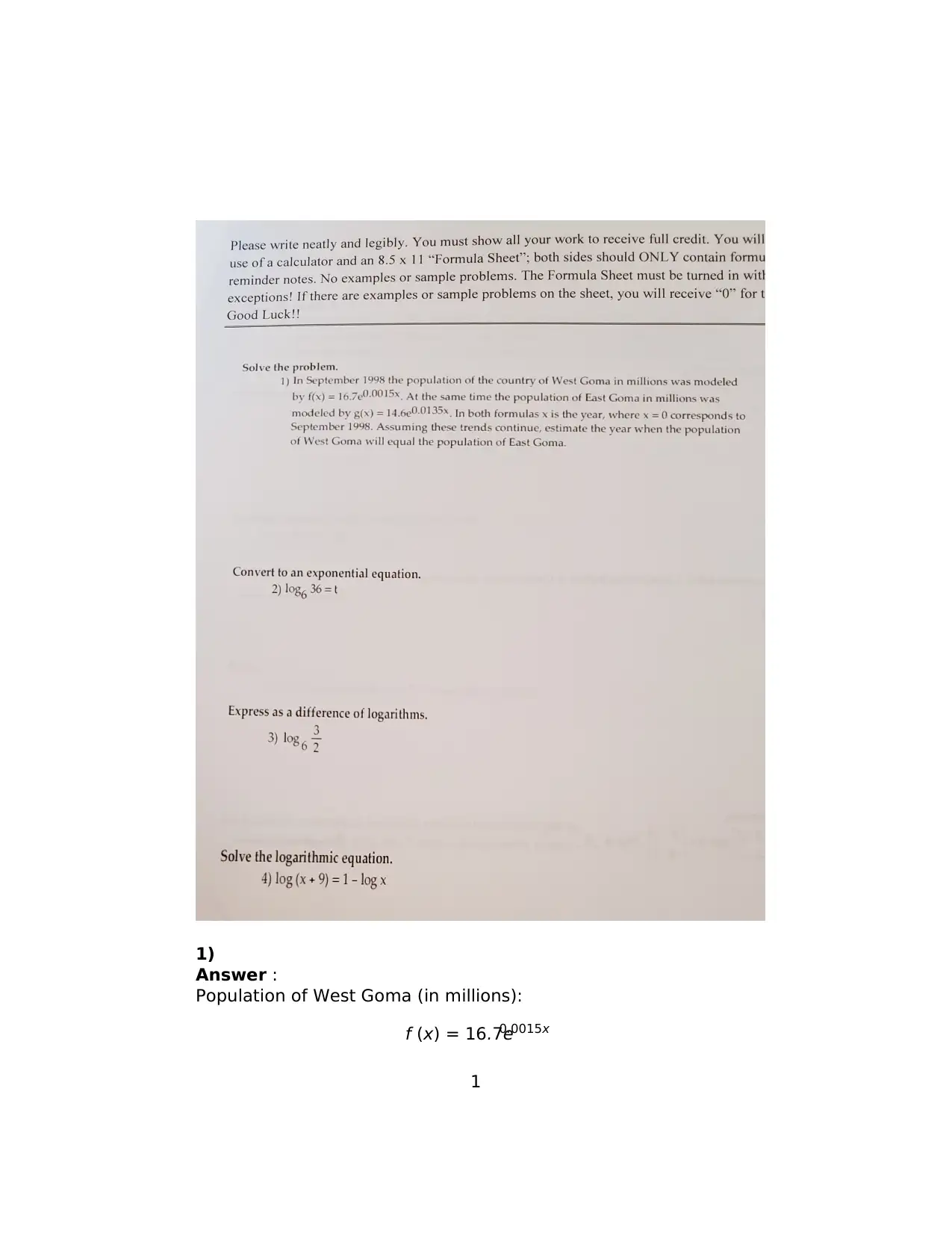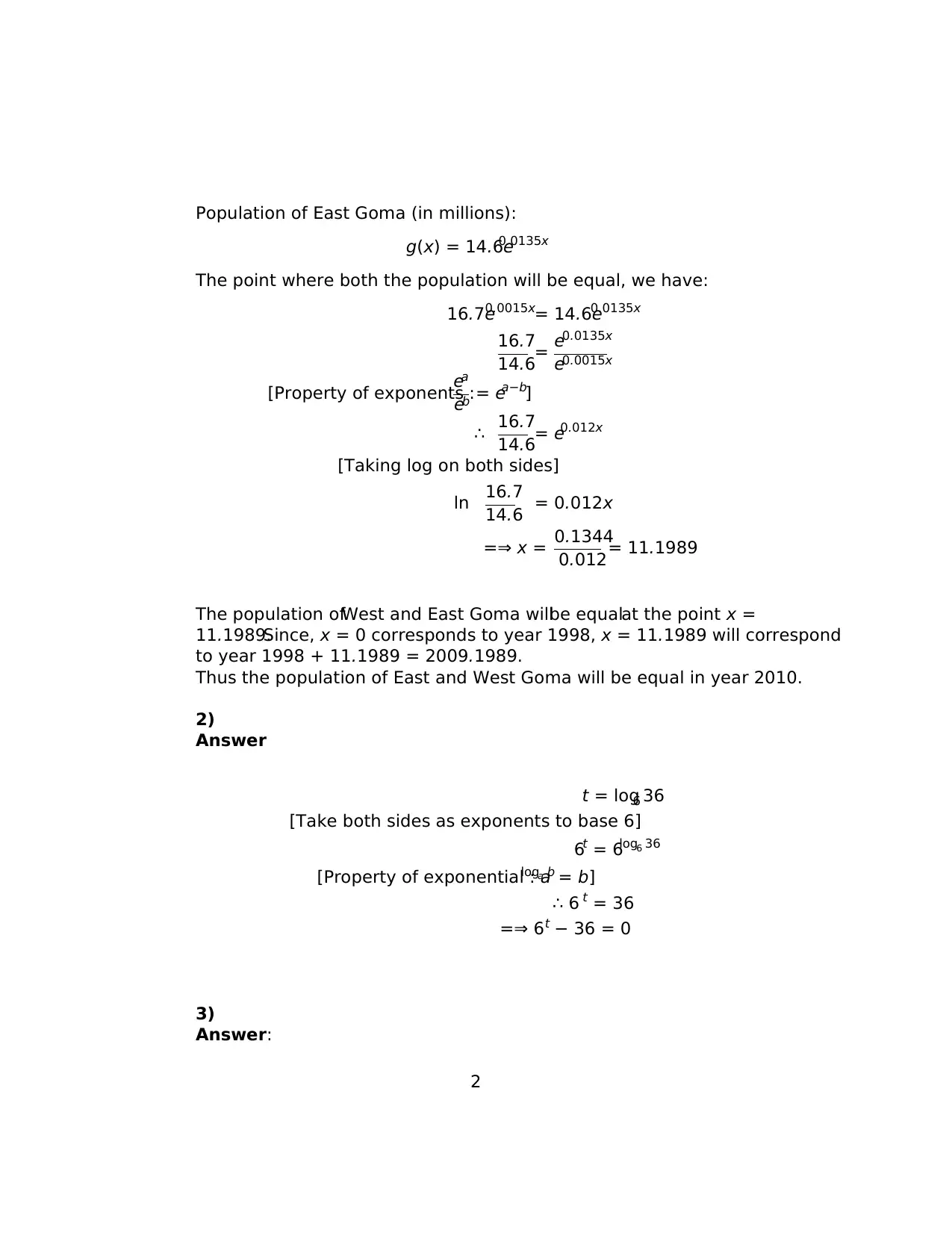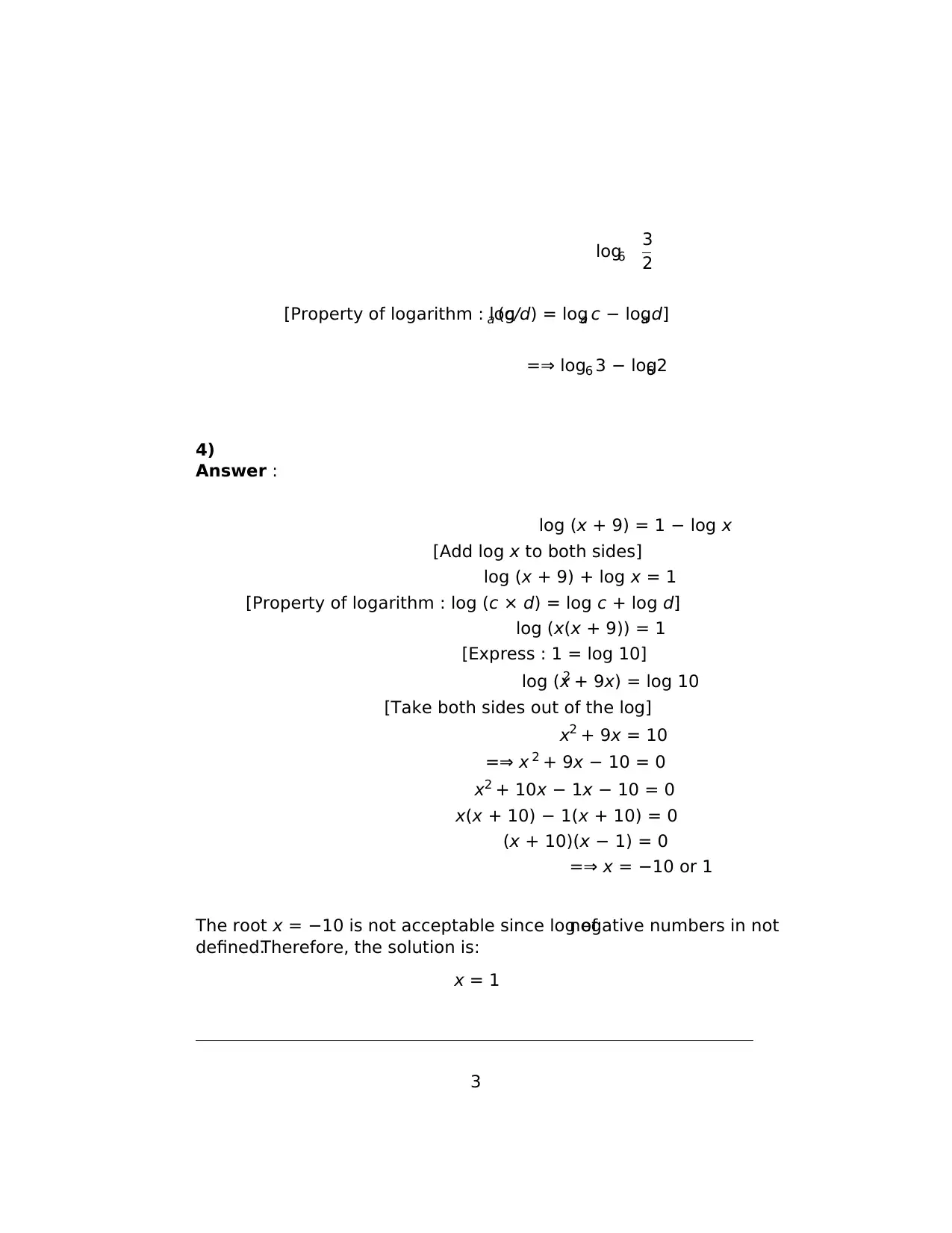Solutions for Algebra, Logarithms and Population Problems
VerifiedAdded on 2022/10/11
|4
|689
|111
Homework Assignment
AI Summary
This document presents solutions to several mathematical problems. The solutions cover topics including exponential equations related to population growth in West and East Goma, logarithmic equations, and simplification of logarithmic expressions. The solutions are detailed, showing each step of the process, and include references to relevant mathematical texts such as algebra and calculus books. The assignment provides a clear, step-by-step approach to solving the problems, demonstrating applications of logarithms and algebraic manipulation, offering a comprehensive guide for students studying foundational mathematics and algebra. This assignment is available on Desklib, a platform providing AI-based study tools.
1 out of 4





![[object Object]](/_next/static/media/star-bottom.7253800d.svg)